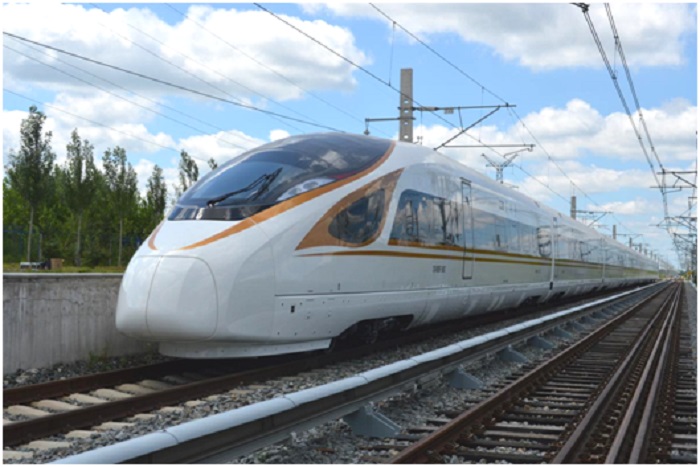



At the workshop of CRRC Changchun Railway Vehicles Co., Ltd. (CRRC Changchun) in northeast China’s Jilin province, four sets of “Chinese calligraphy” handicraft dishes made by welding gun are conspicuously placed on a cabinet, which read “path to excellence,” “beacon of wisdom,” “serve the nation with techniques,” and “build dreams with ingenuity.”
Li Wanjun, a top welder of the company who’s in charge of the welding of bullet train bogies, explained that “We need to follow a path to excellence when manufacturing bullet trains; the beacon of wisdom lights our innovation for bullet train production; and we frontier workers are serving the nation with techniques as more and more bullet trains are exported.”
“There are countless welding joints on every vehicle of bullet trains, and every one of them has something to do with the train’s safety and comfort,” Li said.
“We are welding like we are making artworks, so as to make Chinese bullet trains fast and stable,” he told People’s Daily, adding that’s how he perceives “build dreams with ingenuity.”
High-speed railway is a golden signboard for China’s manufacturing. On Oct. 21, 2020, a new type of variable-gauge bullet train that is able to run 400 kilometers per hour, which was a key project in China’s “Advanced Rail Transit” program, rolled off the production line at the CRRC Changchun. The train can adapt to different track gauges and run on over 90 percent of the railway networks around the world.
In the past six years, the CRRC Changchun has developed over 100 new products, including the Fuxing bullet trains designed to travel at 350 kilometers per hour, a new generation of smart subway cars, and the maglev trains deployed on a tourist route in Qingyuan, south China’s Guangdong province. It is leading the trend in global rail transit equipment manufacturing.
Among all the 254 key standards used in the Fuxing bullet train to which China holds full independent intellectual property rights, 84 percent are Chinese.
CRRC Changchun has earned it an incredibly large share in the international market. The company has won 16 bids of overseas vehicle projects and gained a foothold in high-end overseas markets. It has exported over 9,000 vehicles to 23 countries and regions, including the U.S., Brazil and New Zealand, totaling US$12 billion.
The development speed and achievements of China’s high-speed railway are obvious to all, which couldn’t have been possible without the ceaseless efforts by the frontline workers of the CRRC Changchun.
“We are currently discussing the possibility to replace carbon steel with new materials in welding the bogies. If we make it, the weight of bogies will be halved, which is conducive to the acceleration of bullet trains and will also maintain China’s leading position in the industry,” Li said.
A bullet train is composed of over 40,000 spare parts manufactured by more than 600 first-class supporting enterprise and 1,500 secondary suppliers. It is able to drive the development of over 10 industries, including mechanical engineering, electric engineering and precise instrument.
Rail transit equipment manufacturing is an advantage of Jilin province, and the province is working to make the industry a 100-billion-yuan (US$15.69 billion) market.
At the end of this year, the CRRC Changchun will be relocated to the Changchun Rail Transit Equipment Industrial Development Zone, where the company will build a world-class train maintenance and repairing base.


The Executive and members of the.


The Acting Director, FCT Directorate of.


President Bola Ahmed Tinubu has been.



Barely a month after resignation of.


An Abuja based Legal Practitioner, Osuagwu.



Convener of Equitable Remedy, Mrs. Magaret.


Contractors handling the contract for city.


Nigerian government may have concluded plans.


The Diplomatic Correspondents Association of Nigeria.


A rights group, “Follow Me Talk.
Leave a Comment